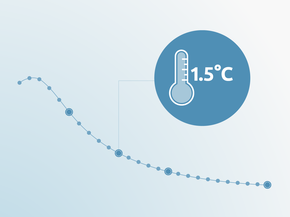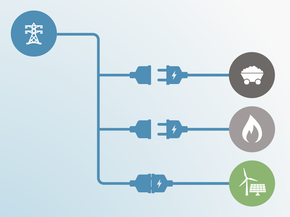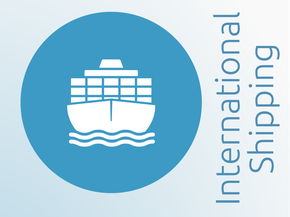Critically Insufficient4°C+
World
NDCs with this rating fall well outside of a country’s “fair share” range and are not at all consistent with holding warming to below 2°C let alone with the Paris Agreement’s stronger 1.5°C limit. If all government NDCs were in this range, warming would exceed 4°C.
Highly insufficient< 4°C
World
NDCs with this rating fall outside of a country’s “fair share” range and are not at all consistent with holding warming to below 2°C let alone with the Paris Agreement’s stronger 1.5°C limit. If all government NDCs were in this range, warming would reach between 3°C and 4°C.
Insufficient< 3°C
World
NDCs with this rating are in the least stringent part of a country’s “fair share” range and not consistent with holding warming below 2°C let alone with the Paris Agreement’s stronger 1.5°C limit. If all government NDCs were in this range, warming would reach over 2°C and up to 3°C.
2°C Compatible< 2°C
World
NDCs with this rating are consistent with the 2009 Copenhagen 2°C goal and therefore fall within a country’s “fair share” range, but are not fully consistent with the Paris Agreement long term temperature goal. If all government NDCs were in this range, warming could be held below, but not well below, 2°C and still be too high to be consistent with the Paris Agreement 1.5°C limit.
1.5°C Paris Agreement Compatible< 1.5°C
World
This rating indicates that a government’s NDCs in the most stringent part of its “fair share” range: it is consistent with the Paris Agreement’s 1.5°C limit.
Role model<< 1.5°C
World
This rating indicates that a government’s NDC is more ambitious than what is considered a “fair” contribution: it is more than consistent with the Paris Agreement’s 1.5°C limit.
Sources
List of references
- David Suzuki Foundation. (2017). Budget 2017 moves towards a clean energy economy, misses nature protection. Retrieved May 4, 2017, from http://www.davidsuzuki.org/media/news/2017/03/budget-2017-moves-towards-a-clean-energy-economy-misses-nature-protection/
- Energy Innovation and Pembina Institute. (2018). Enhancing Canada’s Climate Commitments: Building on the Pan-Canadian Framework. Retrieved from http://energyinnovation.org/wp-content/uploads/2018/03/Canada-Energy-Policy-Simulator-Research-Note-FINAL.pdf
- Environment and Climate Change Canada. (2017a). Canada’s 7th National Communication and 3rd Biennial Report. Retrieved from http://unfccc.int/files/national_reports/national_communications_and_biennial_reports/application/pdf/82051493_canada-nc7-br3-1-5108_eccc_can7thncomm3rdbi-report_en_04_web.pdf
- Environment and Climate Change Canada. (2017b). Low Carbon Economy Fund to reduce greenhouse gas emissions and generate clean growth. Retrieved August 22, 2017, from https://www.canada.ca/en/environment-climate-change/news/2017/06/low_carbon_economyfundtoreducegreenhousegasemissionsandgeneratec.html
- Environment and Climate Change Canada. (2017c). STRATEGY ON SHORT-LIVED CLIMATE POLLUTANTS – 2017. Retrieved from http://ec.gc.ca/GES-GHG/FF677357-F627-463A-A7C4-9068CEF3C3D9/5003-SLCP Strategy 2017_EN.pdf
- Environment and Climate Change Canada. (2018a). Government of Canada releases further details on federal carbon-pollution pricing system. Retrieved from https://www.canada.ca/en/environment-climate-change/news/2018/01/government_of_canadareleasesfurtherdetailsonfederalcarbon-pollut.html
- Environment and Climate Change Canada. (2018b). Next steps in pricing carbon pollution. Retrieved from https://www.canada.ca/en/environment-climate-change/news/2017/12/carbon_pricing_backgrounderministerslettertoprovincesandterritor.html
- Environment and Climate Change Canada. (2018c). The Government of Canada outlines next steps in clean-energy transition. Retrieved from http://electricenergyonline.com/detail_news.php?ID=683134&cat=;91;59&niveauAQ=0
- Global CCS Institute. (2016). Boundary Dam Carbon Capture and Storage Project. Retrieved from https://www.globalccsinstitute.com/projects/boundary-dam-carbon-capture-and-storage-project
- Government of Canada. (2010). A Climate Change Plan for the Purposes of the Kyoto Protocol Implementation Act - May 2010. Retrieved April 21, 2017, from http://www.climatechange.gc.ca/default.asp?lang=En&n=4D57AF05-1
- Government of Canada. (2014). Canada’s Sixth National Report on Climate Change 2014.
- Government of Canada. (2015). Canada’s INDC Submission to the UNFCCC. Retrieved from http://www4.unfccc.int/submissions/INDC/Published Documents/Canada/1/INDC - Canada - English.pdf
- Government of Canada. (2016a). CANADA’S MID-CENTURY LONG-TERM LOW-GREENHOUSE GAS DEVELOPMENT STRATEGY. Retrieved from http://unfccc.int/files/focus/long-term_strategies/application/pdf/canadas_mid-century_long-term_strategy.pdf
- Government of Canada. (2016b). Canada’s Second Biennial Report on Climate Change. Retrieved from http://unfccc.int/files/national_reports/biennial_reports_and_iar/submitted_biennial_reports/application/pdf/canadas_2nd_biennial_report.pdf
- Government of Canada. (2016c). PAN-CANADIAN FRAMEWORK on Clean Growth and Climate Change. Retrieved from https://www.canada.ca/content/dam/themes/environment/documents/weather1/20170125-en.pdf
- Government of Canada. (2016d). Pan-Canadian Framework on Clean Growth and Climate Change. Annex I: Federal investments and measures to support the transition to a low-carbon economy. Retrieved from https://www.canada.ca/en/services/environment/weather/climatechange/pan-canadian-framework/annex-federal-investments-measures.html
- Government of Canada. (2016e). The Government of Canada accelerates investments in clean electricity. Retrieved from http://news.gc.ca/web/article-en.do?nid=1157989
- Government of Canada. (2017a). Forward Regulatory Plan 2017 to 2019. Retrieved from http://www.ec.gc.ca/default.asp?lang=En&n=DF9C1A4C-1&offset=1&toc=show#X-2017022815060985
- Government of Canada. (2017b). National Inventory Report 1990-2015: Greenhouse Gas Sources and Sinks in Canada. Retrieved from https://www.ec.gc.ca/ges-ghg/default.asp?lang=En&n=662F9C56-1
- Government of Canada. (2018). Coal phase-out: the Powering Past Coal Alliance. Retrieved from https://www.canada.ca/en/services/environment/weather/climatechange/canada-international-action/coal-phase-out.html
- MIT CC&ST. (2016). Boundary Dam Fact Sheet: Carbon Dioxide Capture and Storage Project. Retrieved May 10, 2017, from https://sequestration.mit.edu/tools/projects/boundary_dam.html
- National Energy Board of Canada. (2017). Canada’s Energy Future 2017: Energy Supply and Demand Projections to 2040. Retrieved from https://www.neb-one.gc.ca/nrg/ntgrtd/ftr/2017/pblctn-eng.html
- TransportPolicy.net. (2017). Canada: Light-duty: Emissions. Retrieved from http://transportpolicy.net/index.php?title=Canada:_Light-duty:_Emissions
- UNFCCC. (2017). UNFCCC: National Inventory Submissions 2017. Retrieved from http://unfccc.int/national_reports/annex_i_ghg_inventories/national_inventories_submissions/items/10116.php
- World Bank, E. and V. E. (2017). State and Trends of Carbon Pricing 2017. Washington D.C. https://doi.org/10.1596/ 978-1-4648-1218-7
Further analysis
Latest publications
Stay informed
Subscribe to our newsletter






